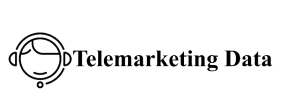In the realm of digital communication, the art of the email ending salutation holds significant weight. It serves as the final impression you leave on your recipient, influencing how your message is perceived and setting the tone for future interactions. Whether you’re corresponding with a colleague, client, or friend, choosing the right closing remark can enhance clarity, professionalism, and rapport. Here’s how to master this often-overlooked aspect of email etiquette. 1. Tailor to Your Relationship: The nature of your relationship with the recipient should dictate the tone of your closing. For formal or professional emails, opt for classics like “Best regards,” “Sincerely,” or “Yours faithfully.” These phrases convey respect and professionalism. Conversely, for more casual or familiar exchanges, “Best,” “Warm regards,” or simply “Cheers” can be suitable choices, maintaining a friendly yet professional demeanor. 2. Consider Cultural Nuances: Email etiquette can vary significantly across cultures.
In some regions, a formal approach is expected
All correspondence, while others embrace a more relaxed style. Understanding these cultural subtleties can prevent misunderstandings and foster better communication. When in doubt, err on the side of formality until you establish the recipient’s preferences. 3. Maintain Colombia TG Number Data Consistency: Consistency in your email closings reinforces your personal or organizational brand. Choose a salutation that aligns with your overall communication style and use it consistently. This helps in building a cohesive and recognizable identity in your correspondence. 4. Adapt to Context: The context of your email should also guide your choice of closing. If you’re following up on a professional matter, “Thank you for your attention” or “Looking forward to your response” can signal expectation and prompt action. Meanwhile, if you’re expressing gratitude or appreciation, “Thank you” or “Many thanks” acknowledges the recipient’s efforts effectively.

Signature Significance: Your email
Signature is an extension of your closing salutation. Ensure it complements your chosen sign-off and includes essential contact information or links to your professional profiles. This ensures clarity and convenience for the recipient if they wish to reach out to you. 6. Embrace Versatility: Depending on the Vietnam Phone Number List nature of your email, you may find yourself using variations of closings. For instance, “Kind regards” can be a versatile choice suitable for both formal and informal communications, bridging the gap between professionalism and warmth. 7. Proofread and Personalize: Finally, always proofread your closing salutation to catch any errors or inconsistencies. Personalize it where appropriate; addressing the recipient by name adds a personal touch that fosters a stronger connection. In essence, the email ending salutation is more than just a formality; it’s a pivotal part of effective communication.

